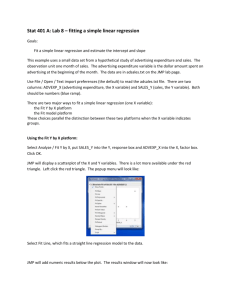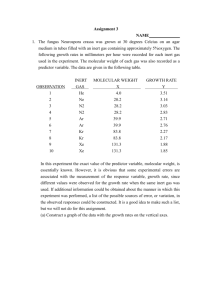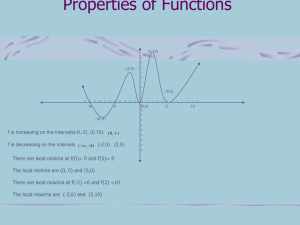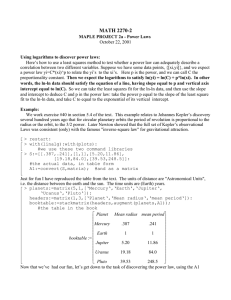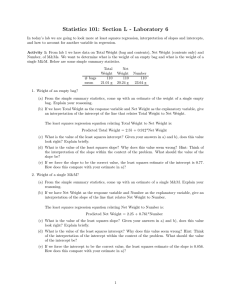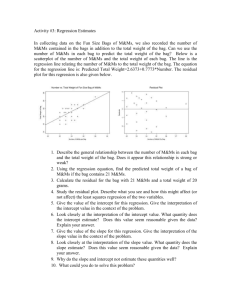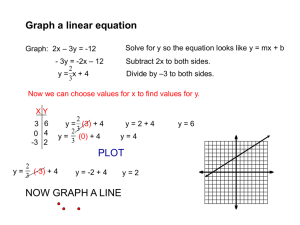Activity #4: Constrained Regression Estimates
advertisement
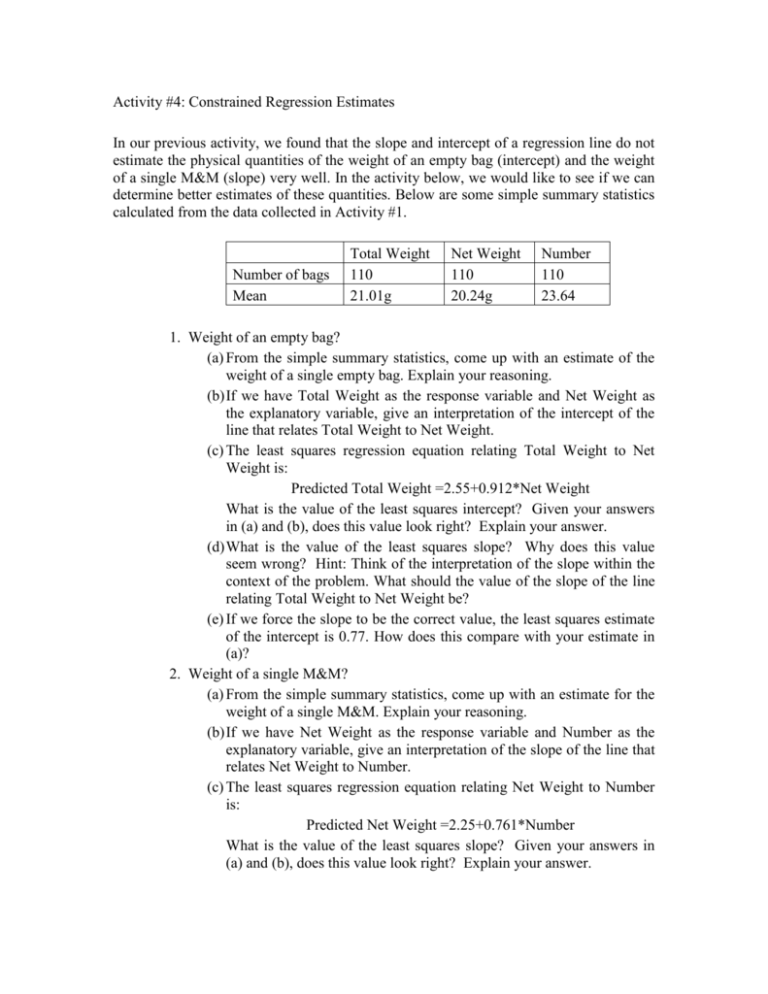
Activity #4: Constrained Regression Estimates In our previous activity, we found that the slope and intercept of a regression line do not estimate the physical quantities of the weight of an empty bag (intercept) and the weight of a single M&M (slope) very well. In the activity below, we would like to see if we can determine better estimates of these quantities. Below are some simple summary statistics calculated from the data collected in Activity #1. Number of bags Mean Total Weight 110 21.01g Net Weight 110 20.24g Number 110 23.64 1. Weight of an empty bag? (a) From the simple summary statistics, come up with an estimate of the weight of a single empty bag. Explain your reasoning. (b) If we have Total Weight as the response variable and Net Weight as the explanatory variable, give an interpretation of the intercept of the line that relates Total Weight to Net Weight. (c) The least squares regression equation relating Total Weight to Net Weight is: Predicted Total Weight =2.55+0.912*Net Weight What is the value of the least squares intercept? Given your answers in (a) and (b), does this value look right? Explain your answer. (d) What is the value of the least squares slope? Why does this value seem wrong? Hint: Think of the interpretation of the slope within the context of the problem. What should the value of the slope of the line relating Total Weight to Net Weight be? (e) If we force the slope to be the correct value, the least squares estimate of the intercept is 0.77. How does this compare with your estimate in (a)? 2. Weight of a single M&M? (a) From the simple summary statistics, come up with an estimate for the weight of a single M&M. Explain your reasoning. (b) If we have Net Weight as the response variable and Number as the explanatory variable, give an interpretation of the slope of the line that relates Net Weight to Number. (c) The least squares regression equation relating Net Weight to Number is: Predicted Net Weight =2.25+0.761*Number What is the value of the least squares slope? Given your answers in (a) and (b), does this value look right? Explain your answer. (d) What is the value of the least squares intercept? Why does this value seem wrong? Hint: Think about the interpretation of the intercept within the context of the problem. What should the value of the intercept of the line that relates Net Weight to Number be? (e) If we force the intercept to be the correct value, the least squares estimate of the slope is 0.856. How does this compare with your estimate in (a)?
